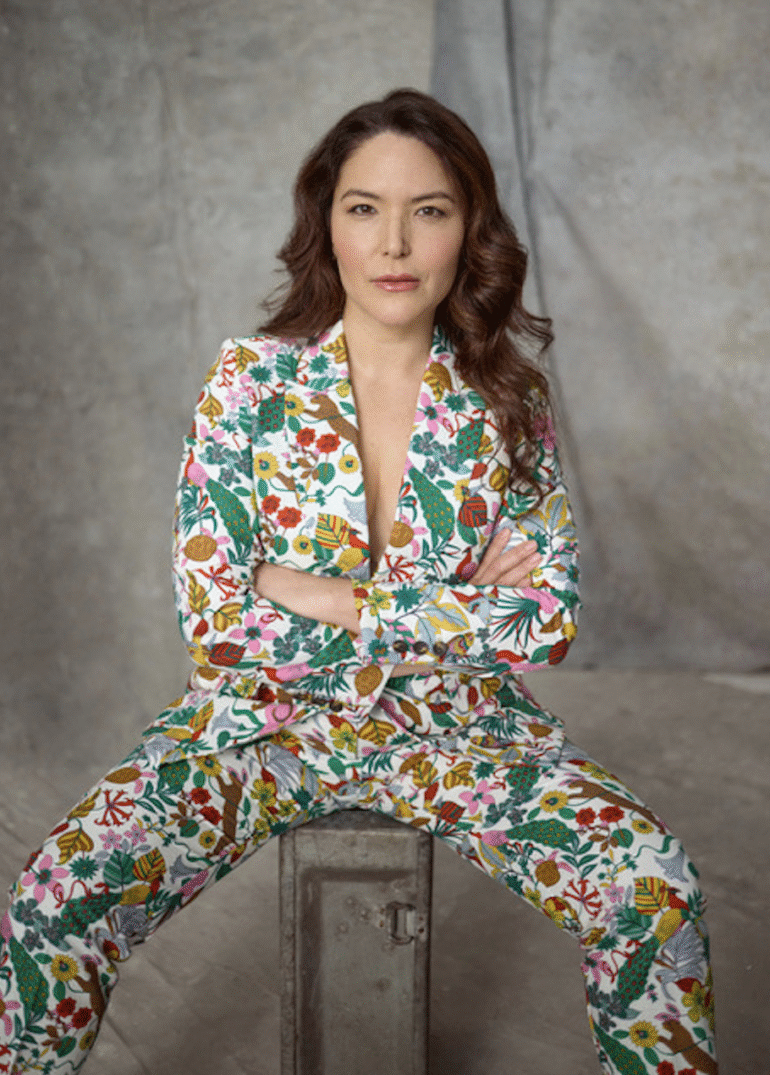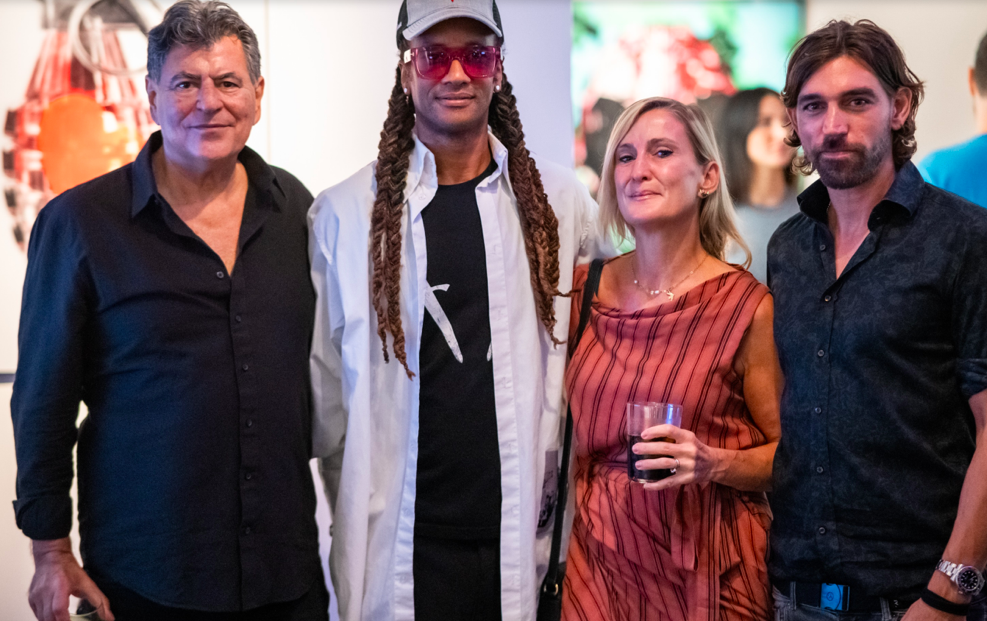Photographic performance artist STEFDIES (Stephanie Leigh Rose) is curating a radical month-long group exhibition at Boxpark Shoreditch in London featuring 21 UK-based women artists. STEFDIES With Friends: THE AUDACITY – The Female Gaze & Taking Up Space runs from 4th until 27th July, 2025. Artists taking part include Ansley Randall, Caroline Banks, Courtenay Kusitor, Danic Lago, Delphine LeBourgeois, Inkteraktiv (Caro Clarke), Jessica Dunn, Jody DeSchutter, Karen Turner, Kayleigh Young, Lene Bladbjerg, Lauren Ly, Louise Nordh, Lucy SM Johnston, Natacha Bisarre, Pippa Smith, Rosie, Constance Regardsoe, Willow Stacey and Yuria Orellana.
The exhibition will feature sculpture, photography, painting, mixed media, and performance curated in the form of a feminist ecosystem where visual art meets performance, workshops, yoga, creativity and healing. Culturalee spoke to STEFDIES as she prepared for the epic exhibition.
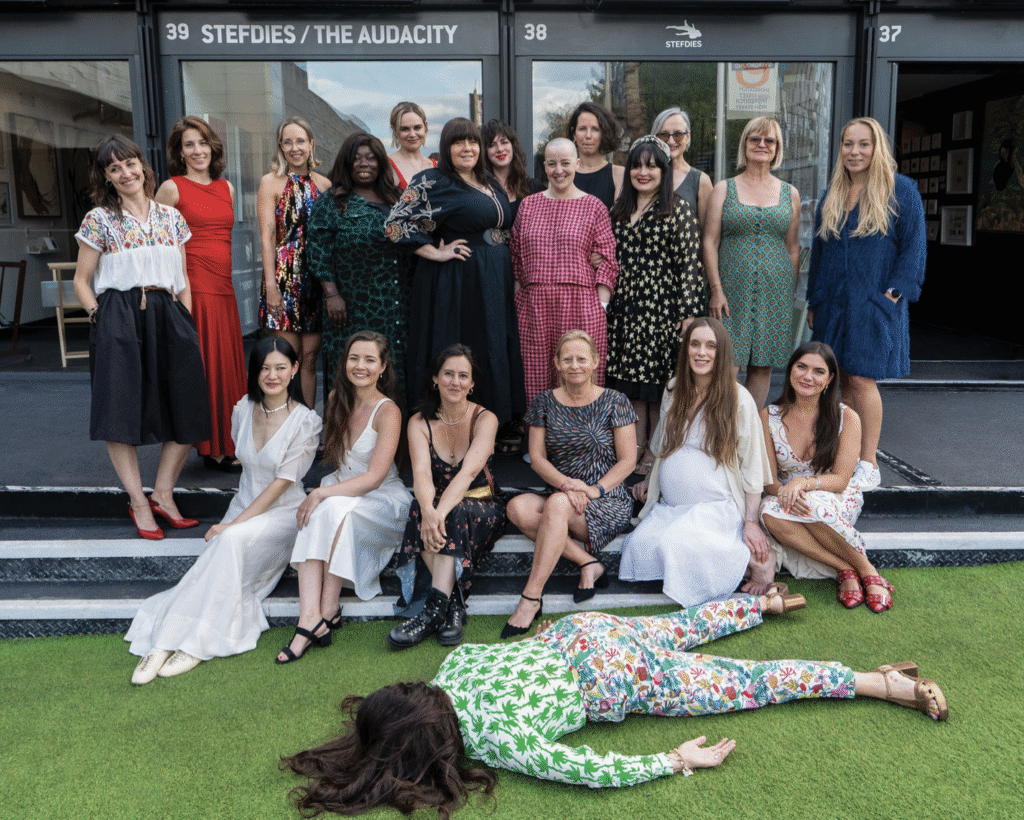
Your work as STEFDIES has always pushed the boundaries of performance and presence—how does “The Audacity” expand or evolve your vision of what a gallery space can be?
STEFDIES has always existed outside the white cube—literally on sidewalks, subway platforms, beaches, and building lobbies. “The Audacity” is a natural evolution of that ethos. Rather than treat the gallery as a neutral container, we’re asking: what happens when we treat it as a site of disruption, of collective witnessing, and of embodied refusal? In Boxpark—a space meant for consumption, pace, and aesthetics—we’re slowing down and laying down, quite literally. We’re asserting presence without permission. The gallery becomes not just a space for art, but for collective resistance and radical softness.
You’ve described this show as a radical rethinking of the traditional exhibition model. Can you explain how you’re reshaping the gallery experience, and what makes this event different from a conventional art show?
We’re tearing down the velvet ropes—figuratively and energetically. “The Audacity” isn’t just a show, it’s an ecosystem. There’s no passive consumption here. Instead of placing the viewer outside the work, we’re inviting them in as co-conspirators, witnesses, participants. Every artist was selected not just for their visual voice, but for how their work calls attention to the embodied, the political, the communal. Add to that yoga sessions, healing circles, artist-led workshops—it becomes a space that breathes, rather than a static presentation of objects.

The exhibition brings together 21 UK-based female-identifying artists. How did you go about curating this collective, and what connects their practices to your own vision of feminist expression?
Curation here wasn’t about checking boxes—it was about intuition, reciprocity, and resonance. I sought out artists whose practices interrogate visibility, power, and embodiment in layered and unexpected ways. Many of them work across media—textiles, photography, performance, installation—and share a sense of urgency in their work. I was drawn to artists whose practices were unapologetically audacious, whether through scale, humor, intimacy, or rage. What binds us isn’t sameness—it’s the shared commitment to creating from a place of truth, care, and confrontation.
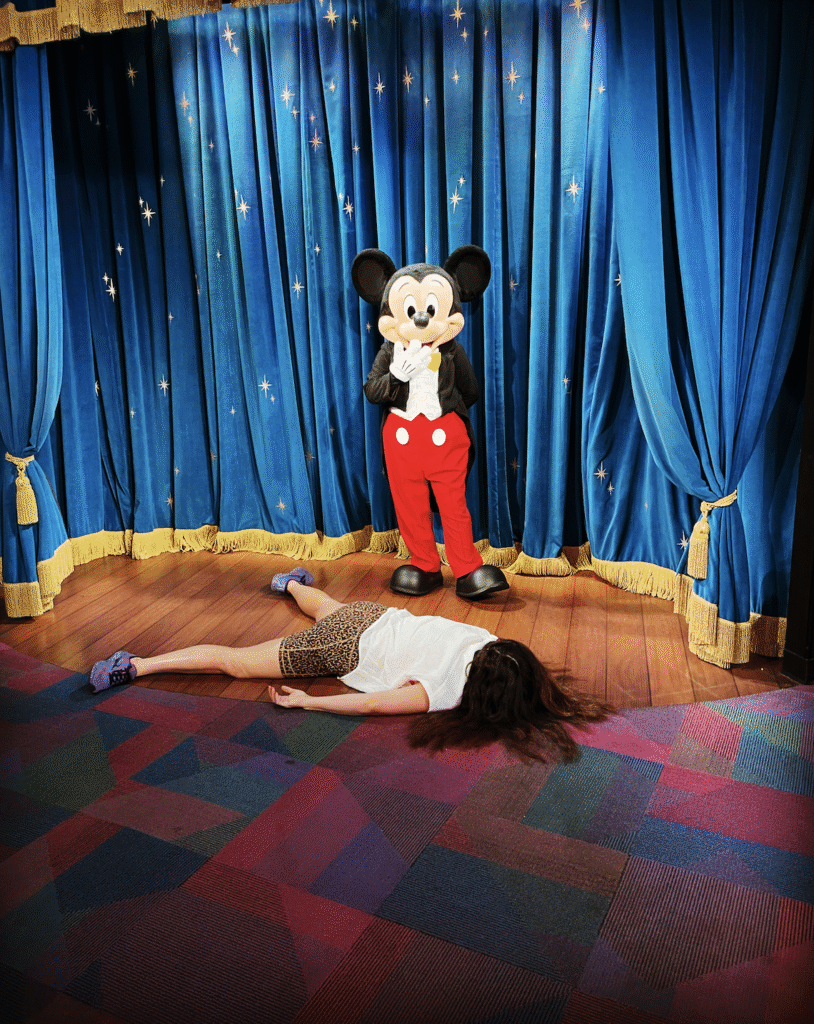
You’re passionate about creating a feminist ecosystem that merges visual art with yoga, healing, and community care. How does “The Audacity” bring those elements into conversation—and why are they vital to the future of art spaces?
We need art spaces that hold more than critique—we need spaces that hold people. As an artist and curator, I think a lot about nervous systems, trauma, joy, and how bodies move through institutions. “The Audacity” is built on the idea that healing is not a side-practice, but a core tenet of feminist resistance. The inclusion of yoga and care-based activations isn’t an “extra”—it’s central. It’s about honoring the full spectrum of being: we can rage, we can rest, we can giggle, we can grieve. That’s the future I want to help build.
What does “taking up space” mean to you personally, and how do you see this concept being interpreted by the artists in the show?
Taking up space is both a defiant act and a sacred one. For me, as STEFDIES, it means occupying public spaces with my prone body—a noncompliant body, a question mark. For others in the show, it means claiming scale, making noise, getting weird, inviting softness. It means existing in contradiction. The artists in this show are exploring space not just physically but conceptually—disrupting binaries, rewriting narratives, and refusing to make themselves smaller for anyone’s comfort.
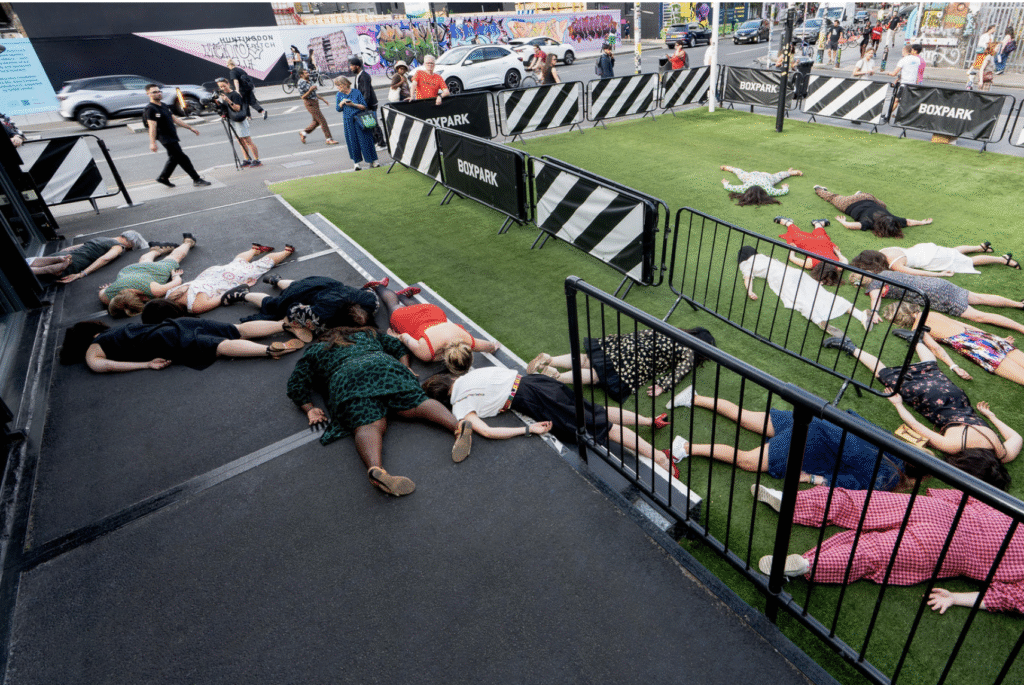
You’re known for your public ‘die-in’ performances—silent, subversive, and often humorous. Can you talk about the concept for the mass die-in you’re planning for this exhibition, and what you hope it will communicate?
The mass die-in is a collective punctuation mark. It’s absurd, it’s solemn, it’s communal, it’s playful—it’s all of it at once. When we lie down together, we become both spectacle and disruption. In the context of Boxpark, it’s a refusal to shop, scroll, or “perform normal.” It’s a reminder that rest, protest, and performance can intersect. I hope it feels liberating, a little disorienting, and deeply connective. And honestly? I hope we make a beautiful mess of it.
Boxpark Shoreditch is an unconventional venue for an art show—how does the setting influence the work or amplify the message of the exhibition?
Boxpark is the message. It’s a space of speed, consumption, curated cool. Placing a feminist, care-centered, counter-capitalist art show in that context is deliberate. It forces a friction—between spectacle and stillness, between trend and truth. We’re not here to blend in. We’re here to take up space in a place that isn’t used to holding what we’re bringing. That tension is productive. It holds the possibility for disruption and surprise.
At the same time, it’s important to say this: the people behind the space were anything but resistant. The Boxpark team, and especially Ezinné Egbochue, were incredibly receptive and proactive in welcoming me and this vision. Ezinné in particular was a true champion from the start—she understood the mission immediately and advocated for it fiercely. That kind of institutional support is rare, and it made a huge difference in bringing this project to life in a way that felt aligned, bold, and fully supported.
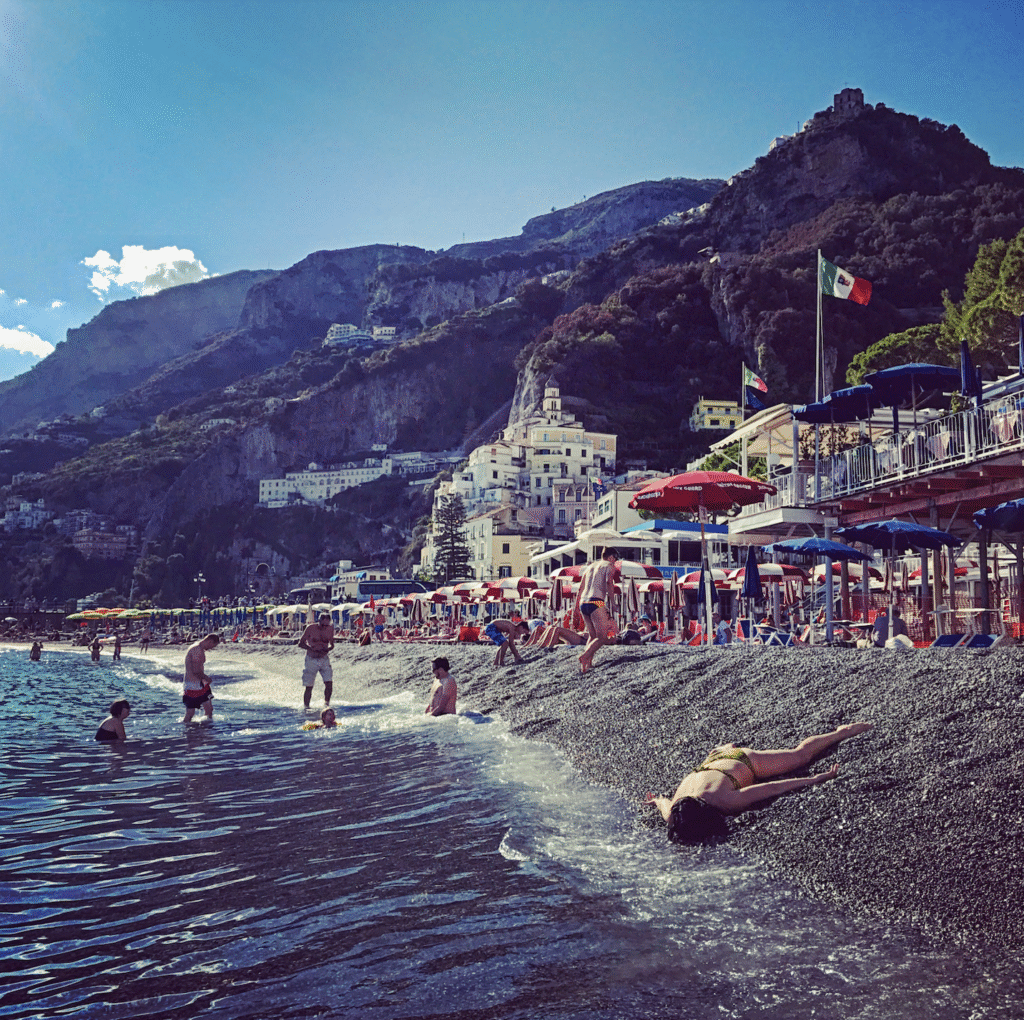
There’s an inherently political and satirical edge to your STEFDIES performances. How does humour factor into your feminist approach, and why is playfulness such a powerful tool in confronting serious themes?
Humor disarms. It sneaks past defenses. It invites people to stay a little longer with discomfort. In STEFDIES, humor is the sugar that helps the critique go down. It’s absurd to lie down in a museum lobby or on a busy sidewalk—but that absurdity is a mirror. It reflects the weirdness of our cultural norms, especially around productivity, performance, and presence. Playfulness isn’t frivolous—it’s revolutionary. It opens doors to conversations that might otherwise be shut tight.
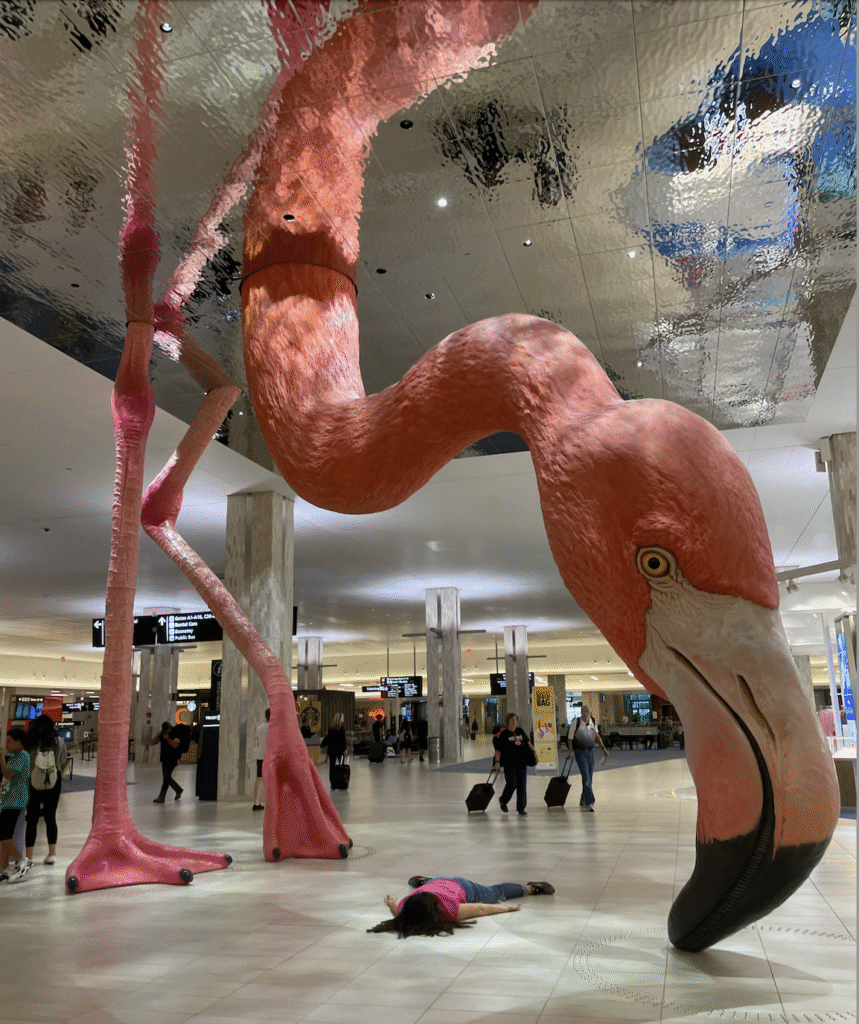
How do you navigate the line between performance, protest, and healing in your creative process—and how do you hope audiences will engage with this intersection at “The Audacity”?
That line is blurry—and I want it to stay that way. My practice exists in the in-between. A STEFDIES performance might be read as protest by one viewer, as meditation by another, and as comedy by a third. And honestly? They’re all right. Healing and protest aren’t mutually exclusive—in fact, they need each other. At “The Audacity,” I want people to feel invited to explore, to be curious, to listen with their bodies. Whether they come away laughing, crying, or quietly reflecting—it’s all valid.
Looking ahead, do you see this exhibition as a one-off event or the start of a broader movement or collective? What’s your long-term vision for this feminist, art-centered ecosystem you’re building?
This is absolutely the beginning. I see “The Audacity” as a living prototype for what feminist art spaces can become—ecological, expansive, community-rooted. We’re already dreaming up what’s next: residencies, touring iterations, public activations, mentorship spaces, global collaborations. I want to build something that’s less about hierarchy and more about reciprocity. A space where artists, healers, and communities can co-create. This isn’t just an exhibition. It’s a movement.
All images Courtesy of STEFDIES.
STEFDIES WITH FRIENDS: THE AUDACITY – THE FEMALE GAZE & TAKING UP SPACE is at Boxpark Shoreditch Gallery in London from 4th–27th July, 2025. Further information here.


